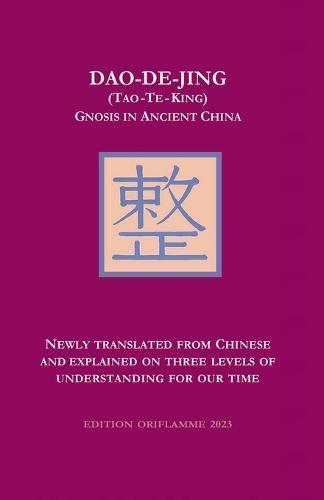Readings Newsletter
Become a Readings Member to make your shopping experience even easier.
Sign in or sign up for free!
You’re not far away from qualifying for FREE standard shipping within Australia
You’ve qualified for FREE standard shipping within Australia
The cart is loading…






This title is printed to order. This book may have been self-published. If so, we cannot guarantee the quality of the content. In the main most books will have gone through the editing process however some may not. We therefore suggest that you be aware of this before ordering this book. If in doubt check either the author or publisher’s details as we are unable to accept any returns unless they are faulty. Please contact us if you have any questions.
To render the Dao-De-Jing in a modern Western language means to surmount a cultural barrier, a scriptural barrier and a time barrier, only to find oneself before a multitude of possible interpretations for one glyph, or for a pair or a triplet of them. Even today's Chinese scholars are divided over what might be the best understanding. The brand-new version offered here was mainly made comparing three Chinese originals, after studying 30 earlier versions in 6 European languages, plus several by Chinese scholars - and this strictly, and for the first time really, without any supposually creative interpolations. Many shocking inventions in earlier interpretations have been cleared and explained, using historical and cultural evidence. Other variants, textual symmetries, and interrelations between the different verses, are discussed. - And this translation has been approved by a Chinese scholar. Esoteric commentaries are very in-depth from Nr. 34 to 81, but only sketchy from Nr 1 to 33, where they recommend an earlier esoteric commentary - but not the textual translation used by it - around 1980, by Jan van Rijckenborgh and Catharose de Petri. This book and its commentaries include usages, traditions and outer circumstances of the 6th to 4th centuries b.C. - especially where metaphors and proverbs adorn the original text. They always illustrate three levels of understanding: that of every-day's life of everybody, that of the demands for a normal Wise - general, king, or teacher - and that of the intimate inner spiritual path of Initiation. Some rare and very enlightening pictures are sustaining various interpretations never heard before.
$9.00 standard shipping within Australia
FREE standard shipping within Australia for orders over $100.00
Express & International shipping calculated at checkout
This title is printed to order. This book may have been self-published. If so, we cannot guarantee the quality of the content. In the main most books will have gone through the editing process however some may not. We therefore suggest that you be aware of this before ordering this book. If in doubt check either the author or publisher’s details as we are unable to accept any returns unless they are faulty. Please contact us if you have any questions.
To render the Dao-De-Jing in a modern Western language means to surmount a cultural barrier, a scriptural barrier and a time barrier, only to find oneself before a multitude of possible interpretations for one glyph, or for a pair or a triplet of them. Even today's Chinese scholars are divided over what might be the best understanding. The brand-new version offered here was mainly made comparing three Chinese originals, after studying 30 earlier versions in 6 European languages, plus several by Chinese scholars - and this strictly, and for the first time really, without any supposually creative interpolations. Many shocking inventions in earlier interpretations have been cleared and explained, using historical and cultural evidence. Other variants, textual symmetries, and interrelations between the different verses, are discussed. - And this translation has been approved by a Chinese scholar. Esoteric commentaries are very in-depth from Nr. 34 to 81, but only sketchy from Nr 1 to 33, where they recommend an earlier esoteric commentary - but not the textual translation used by it - around 1980, by Jan van Rijckenborgh and Catharose de Petri. This book and its commentaries include usages, traditions and outer circumstances of the 6th to 4th centuries b.C. - especially where metaphors and proverbs adorn the original text. They always illustrate three levels of understanding: that of every-day's life of everybody, that of the demands for a normal Wise - general, king, or teacher - and that of the intimate inner spiritual path of Initiation. Some rare and very enlightening pictures are sustaining various interpretations never heard before.